EHHVF Bag Filters Type Vacuum Cleaner
-
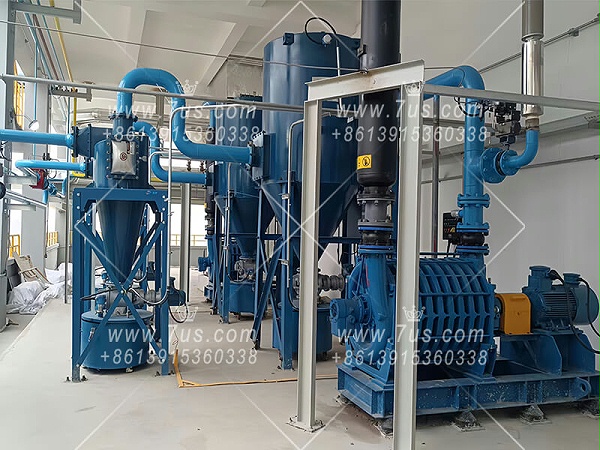
-
1.1 Product Name: HVF Flat Bag Central Vacuum Cleaning Station System.
1.2 Parameters: Temperature resistance ≤ 240 ℃; 1500-10000 cubic meters per hour (per unit).
1.3 Negative pressure vacuum resistance: -30KPa to -100KPa.
1.4 Structural characteristics: When the thickness is the same, the box is designed to be cylindrical, which is more pressure resistant than square, and resistant to suction and collapse.
1.5 Bag parameters: Flat bag, area: 10-160 square meters, filtration rate: 1-1.2 meters per minute.
-
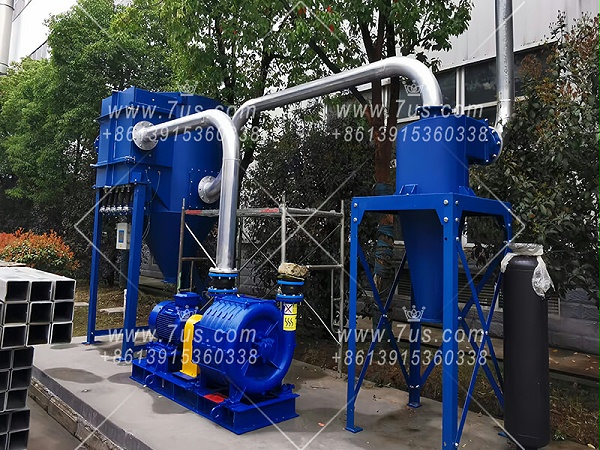
-
1.6 Bag material: Polyester+PTFE film covering (optional high temperature resistance and anti-static function).
1.7 Bag installation: Adopt side and front door opening, and install flat cloth bags with side insertion. No need to open the bulky top cover.
1.8 Multi stage filtration: cyclone+flat cloth bag+HEPA high-efficiency filter, 1 milligram low concentration emission, protecting the fan.
1.9. Cleaning ability: Meet the requirement of simultaneously opening 3-20 suction heads with a diameter of DN50mm for cleaning work.
1.10.Product features: It can work continuously for 24 hours, with a large range of air flow. The smooth surface of the cloth bag has a good cleaning effect.
Common accessories for flat bag dust collectors
-
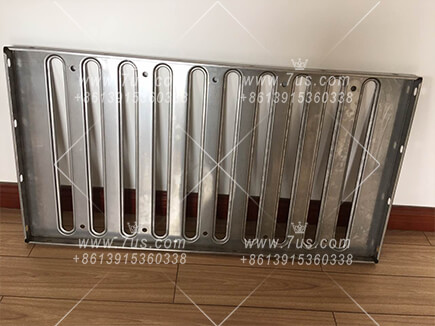
10 slot type flat bag cage
8 slots can be customized
-

Carbon steel fabric bag cage frame
General lengths:1.5M or 2M
-
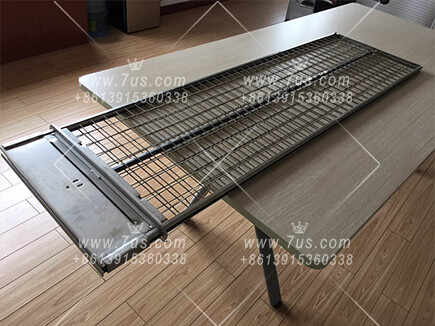
Stainless steel fabric bag cage
sus304 or sus316L
-
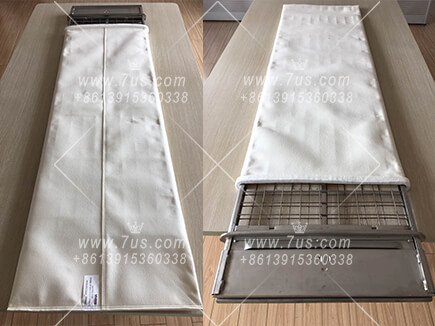
Flat bags
PE,PPS,NOMEX,P84
Vacuum generating device
Common negative pressure generating devices
1. The application of vacuum pump in vacuum cleaning system?
The application range of water ring (water cup) vacuum pump is very wide, and the vacuum degree can exceed -30Kpa. However, due to the small air volume of a single machine, it is not commonly used in vacuum cleaning systems.
2. Application of Roots blower in vacuum cleaning system?
Roots blower is widely used in positive pressure airflow transportation, but usually a negative pressure value of -30Kpa or above is required in vacuum cleaning systems, and the vacuum degree of ordinary Roots blower cannot meet it.
3. The application of air ring fan in vacuum cleaning system?
The air ring (volute) fan has been widely used in vacuum cleaning systems, and the technology is also quite mature. It is cheap but has high heat generation. During normal operation, the shell heats up and the temperature is around 120 degrees Celsius,
so the surrounding environment needs good ventilation to cool down. The upper limit of negative pressure value for air ring fans is usually -30Kpa.
4. The application of multi-stage centrifugal fans in vacuum cleaning systems?
Multi stage centrifugal fans usually have 5-stage or 7-stage compression and high negative pressure values. When facing high negative pressure requirements above -40Kpa, multi-stage centrifugal fans are usually selected. Advantages: A single fan has high
air volume, high negative pressure value, and stable operation. Disadvantage: The price is expensive. Usually, temperature monitors and vibration monitors are required to monitor the operation status of the fan at any time. Common international
brands include NASH, SPENCER, INTERNATIONAL, and so on.
5. Common conversion relationships between pressure and air volume units?
1Kg (kg)=0.1Mpa (megapascals)=100Kpa (kilopascals)=100000pa (pascals)=1bar (bars)=1000mbar (millibars)
1000L/min (liter/minute)=1m3/min (cubic meter/minute)=60m3/h (cubic meter/hour)=60CMH
Introduction to Working Principles
Introduction to the working principle of the product
-
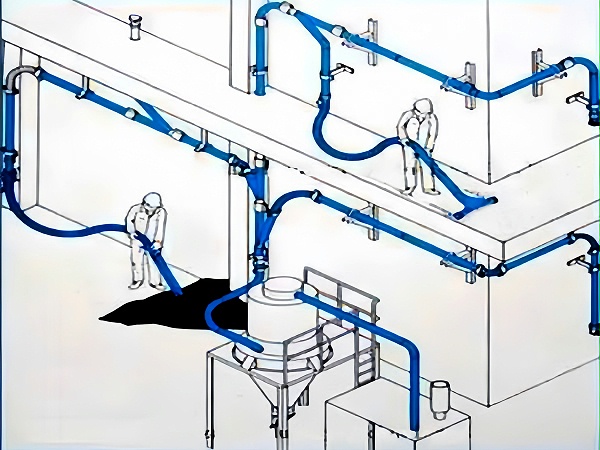
-
1.1 What is the central vacuum cleaning station system?
1.2 The factory has a large area and requires multiple vacuum cleaners and suction handles to work simultaneously during cleaning.
1.3 Vacuum cleaning system can be simply understood as a large super vacuum cleaner.
1.4 The vacuum cleaning system is equivalent to combining multiple individual vacuum cleaners in series, with high negative pressure and suction force.
1.5 Scattered dust removal and cleaning, centralized conveying and dust removal, centralized ash discharge, and simple maintenance and management are commonly referred to as cleaning stations.
1.6 Small wind volume, high negative pressure, high power. Example: At -30KPA and 1500M3/H, a power of 22KW is required
Design considerations
Precautions for high vacuum negative pressure system
1. What is the difference between positive pressure and negative pressure?
1.1. For example, blowing through the mouth is positive pressure, while inhaling through the mouth is negative pressure.
1.2. Therefore, when the fan blows air into the dust collector, it is a positive pressure filtration. For example, when
conveying materials through airflow, most of the options are for a positive pressure system.
1.3. The fan draws air from the dust collector, which is negative pressure filtration, such as vacuum cleaning and vacuum feeding. The negative
pressure system is selected.
2. What is the significant difference in the force between positive pressure blowing and negative pressure suction?
2.1. For example, when blowing through the mouth, it is easy to blow down an empty cola bottle that is 20 centimeters away.
2.2 When inhaling through the mouth, do not lift up an empty cola bottle that is 10 centimeters away.
2.3 Therefore,
the effectiveness of vacuum cleaning depends on the distance between the vacuum broom and the ground. The closer it is to the ground, the greater the suction force and the better the cleaning effect.
2.4 Airflow conveying can choose either
positive or negative pressure airflow. However, positive pressure conveying is usually chosen because when the same force is generated, it can consume energy, and positive pressure is lower than negative pressure.
2.5. When conveying with
positive pressure airflow, the material thickness of the shell of the dust collector is thin, while when conveying with negative pressure airflow, the material thickness of the shell of the dust collector is thick.
3. What are the requirements of negative pressure on the structure of dust collectors?
3.1 For example, blowing through the mouth won't break the cola bottle, while inhaling through the mouth can deflate the cola bottle.
3.2. Therefore, dust collectors used for vacuum negative pressure need to withstand pressure and prevent
suction collapse, and the wall thickness cannot be cut corners.
3.3. With the same wall thickness, cylindrical boxes are more resistant to negative pressure than square boxes. Therefore, the cylinder of vacuum dust collectors is usually
designed as a cylindrical shape.
4. How to prevent the fan from holding pressure?
4.1. When the cleaning valve is completely closed or the pipeline is blocked, the high negative pressure fan faces the risk of pressure suppression and burning.
4.2. To prevent pressure buildup, a pressure relief valve is usually installed
above the dust collector or a bypass pressure relief valve is installed on the main pipeline before the fan inlet.
4.3. After instrument detection, feedback data is sent to the PLC. The PLC program makes judgments based on the feedback parameters
and transmits instructions to enable the pneumatic valve to perform opening and closing actions.
4.4. When the cleaning valve is completely closed, the pressure relief valve will automatically open, extracting wild wind from the environment
and releasing pressure, effectively protecting the vacuum fan.
5. Is the combination of cyclone, bag or filter cartridge, HEPA filter, and three-stage purification meaningful?
5.1. For low concentration and non continuous cleaning, direct bag or filter cartridge filtration is sufficient.
5.2. For high concentration, multi job, and long-term continuous operations, it is recommended to use a two-stage filtration
system of cyclone+bag or filter cartridge.
5.3. For those using multi-stage centrifugal fans, it is recommended to use a three-stage filtration system consisting of cyclone, bag or filter cartridge, and HEPA.
5.4. Foreign brand multi-stage
centrifugal fans with high negative pressure and large air volume are often expensive, far exceeding the price of dust collectors.
5.5. Once the blades of a multi-stage centrifugal fan are contaminated with dust, over time, it will cause
dynamic balance failure and face expensive major repairs.
5.6. The three-stage filtration of cyclone+bag or filter cartridge+HEPA filter results in a final emission concentration of less than 1 milligram/cubic meter, which not only protects
the fan but also meets the requirements of environmental protection and unorganized emissions. It can be discharged without a 15 meter chimney.
5.7. In the mode of three-level filtration, when the second level filter material is damaged,
the pressure difference monitoring value will exceed the range and be abnormal. After receiving the feedback signal, the PLC will alarm and can link to emergency shutdown. At this time, the third level filter material is responsible for high concentration
interception, and the final support time for the HEPA filter to reach adsorption saturation is about 15 minutes.
5.8. By sacrificing the HEPA filter, direct dust contamination of the fan blades was prevented, the fan was protected, and valuable
time was gained for discovering abnormal situations of powder leakage and handling.
6. How to design the pipeline of the cleaning system?
6.1. If the wind speed in the pipeline is high, it can prevent dust from accumulating in the pipeline. When designing explosion-proof dust, it is required that the pipeline wind speed is not less than 23 meters per second, so the pipeline wind speed of
vacuum dust collectors is usually referred to as above 23 meters per second.
6.2. The wind speed of the branch pipeline is usually above 23 meters per second.
6.3. The diameter of the pipeline connecting the suction port to
the terminal is DN40mm or DN50mm, and the wind speed at the pipe mouth is usually above 50 meters per second
6.4. Prevention of electric shock: If metal dust is being cleaned, high-speed airflow will generate static electricity when rubbing
against the pipe wall. At this time, copper braided tape grounding should be used to eliminate charges in the pipeline. If there is no grounding to eliminate the charge, touching the pipeline can cause mild hand numbness, and severe cases can
lead to corona. Such accidents are also common.
7. What is the significance of installing frequency converters on vacuum fans?
7.1. The purpose of installing a frequency converter on a vacuum fan is to protect the fan, prevent the motor from overload and burning out, and prevent current from impacting the power grid.
7.2. The allowable frequency adjustment range
for vacuum fans is very small. Exceeding this range can cause fan surging, vibration, and unstable negative pressure values.
7.3 Therefore, it is not possible to adjust the vacuum fan using the conventional thinking of variable frequency
fans.
8. What is the difference between shutdown ash cleaning and online ash cleaning?
8.1.Low concentration, short duration, low dust content, usually using shutdown dust removal mode.
8.2. In the shutdown and ash cleaning mode, only the first level discharge valve is installed in the hopper. After the shutdown, the discharge
valve can be opened to discharge the material.
8.3. In high concentration, long-term, and multi job conditions with dust levels exceeding multiple tons, online dust cleaning is usually used.
8.4. A two-stage lock air and ash discharge
valve has been installed for online ash cleaning. When the upper level is closed, the lower level opens for ash discharge; The upper level opens the ash discharge, and the lower level closes the air lock, thus operating back and forth.
8.5.
For example, when the vacuum cleaning system is used for vacuum feeding, the online cleaning mode is also adopted.
-
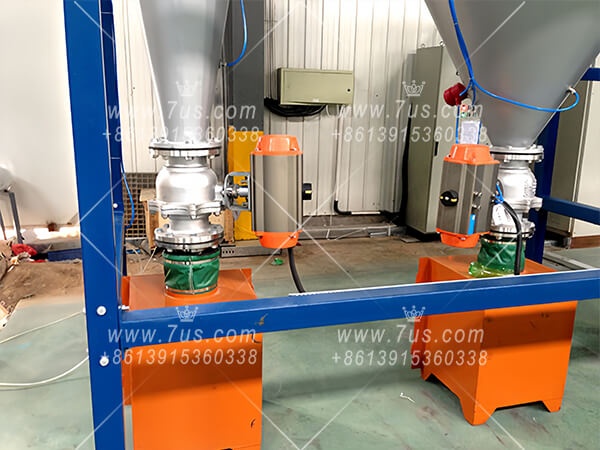 single-stage valve:Offline ash cleaning
single-stage valve:Offline ash cleaning
-
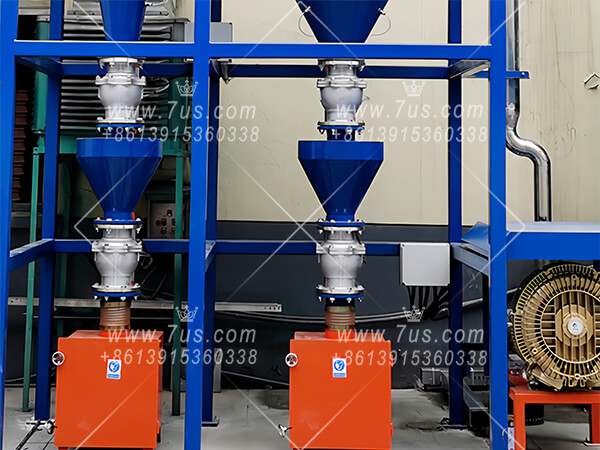 Double stage valve:Online cleaning of dust
Double stage valve:Online cleaning of dust
Common pipe fittings valve accessories
Common pipe fittings, valve accessories
1. What material is used for vacuum pipes?
Usually, stainless steel pipes or carbon steel pipes can be used.
2. What are the thickness requirements for vacuum pipes?
For example, at -30KPA, the corresponding weight is 0.3 kilograms, and using a stainless steel decorative tube with a normal thickness is sufficient. The standard for selecting tap water pipes for drainage can be used for vacuum pipelines.
3. What are the requirements for the sealing of vacuum pipes?
3.1. The sealing requirement for vacuum cleaning pipelines should be based on the requirement of sealing the water supply pipe without leakage.
3.2. To prevent pipeline leakage, it is recommended to use full welding technology for all main
and branch pipes in the pipeline.
3.3. When valve control is required in pipelines, it is recommended to use valves in drainage engineering that can seal water and also be capable of sealing negative pressure suction.
3.4. The interface
for connecting the terminal to the vacuum cleaner is usually sealed with a DN40 or DN50mm tap water ball valve, which is more effective than a wall valve.
3.5. The hose for the terminal vacuum cleaner can be a civilian vacuum cleaner hose,
but it is more recommended to use transparent steel wire hose, which has high strength and can be freely cut in length.
Common operating conditions range
Common operating conditions range
Scope of application of central vacuum cleaning system:
1. Grain processing industry: Clean up the dust generated by the screening, crushing, mixing, and transportation processes of grain raw materials.
2. Food processing workshop: Dust generated from processes such as raw material crushing, material mixing and stirring, transportation, and packaging.
3. Flour and starch production workshop: Mainly aimed at controlling a large amount of dust generated in processes such as grain processing, grinding, bagging, and packaging.
4. Composite materials industry:Clean up the dust generated during the cutting, polishing, and other processes of composite material products.
5. Chemical industry:Clean up the dust and particles generated by the chemical industry, and purify the production workshop.
6. Power plant:Remove flying dust, slag blocks, and scattered coal and coal powder from the coal transportation corridor, transfer station, and other areas.
7. Steel plant:Purify workshops in ironmaking, steelmaking, coking, and sintering plants, clean up
loose materials and accumulated ash from conveyor belts and transfer stations, fly ash, dust, iron oxide scale, sewage, and dirt from forging and pressing equipment.
8. Foundry:Clean up slag, waste metal blocks, waste sand, and metal burrs, clean up scattered materials, and remove waste sand and powdered materials during loading and unloading.
9. Mechanical processing plant:Clean up various metal chips and dust, and recycle shot peened steel balls.
10. Cement plant:Clean, load, and suction cement raw materials and intermediate products.
11. Shipyard:The removal of welding slag and dirt inside the cabin, and the separation and recovery of steel shot after shot peening.
12. Wood processing plant::Clean sawdust and sawdust.
13. Grain depot:Handling, conveying, warehousing, and cleaning of bulk grain.
14. Coal mines and coal processing plants:Transportation of coal under special conditions, cleaning of equipment and environment.
15. Glass Factory:Vacuum feeding, conveying and cleaning of raw materials and broken glass.
16. Packaging machinery industry:To provide a clean negative pressure air source for the negative pressure cylinder and prevent it from malfunctioning due to dust pollution, one vacuum station system can replace the mode
of multiple traditional vacuum pumps.
Other common and popular questions
classic problems about filter cartridge dust collectors
1. How to prevent foreign objects from being sucked into the pipeline?
Welding steel wire mesh or a few steel wires above the suction port of the terminal pipeline can effectively prevent plastic bags and other debris from being sucked into the pipeline.
2. Can wet floors with water be cleaned?
Of course. At this time, one water removal bucket needs to be configured and installed between the suction scraper and the terminal suction port. The purpose of the water removal bucket is to separate water and gas。
3. Can we clean up large-sized debris such as plastic paper and sheets?
Of course. At this point, one debris bin needs to be configured and installed between the suction bar and the terminal suction port. There is a steel wire basket inside the debris bin, which plays a role in separating large-sized debris.
4. Can flammable and explosive dust be cleaned?
Of course, it is necessary to install explosion-proof devices such as explosion-proof discs, flameless explosion-proof devices, one-way explosion-proof valves, explosion-proof motors, etc. in accordance with explosion-proof requirements.
5. Are there any other high negative pressure generating devices?
Of course there is. For example, the magnetic levitation fan will not be elaborated on due to limited space.


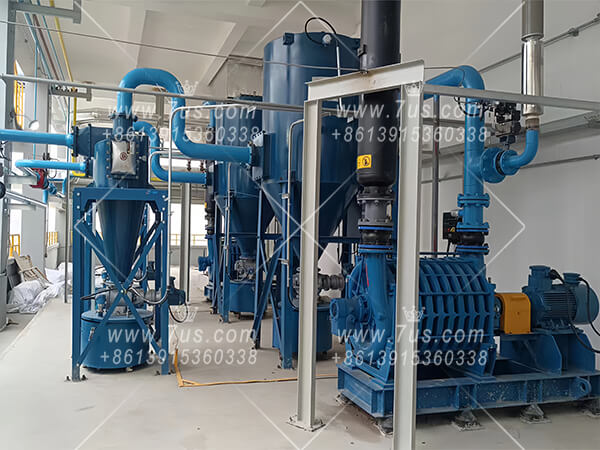





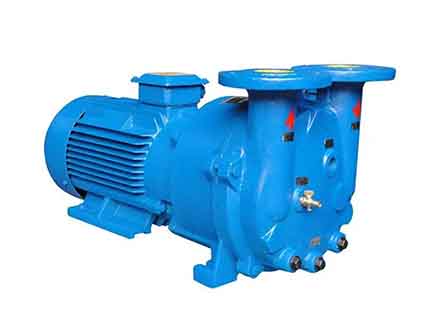
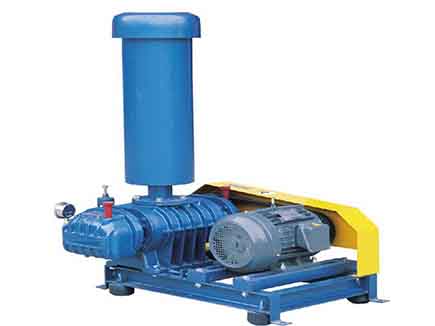
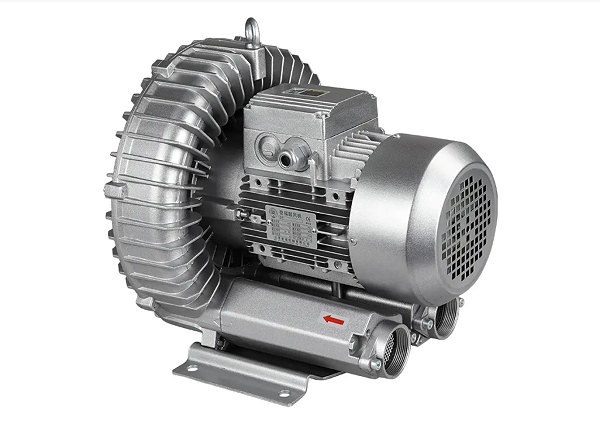
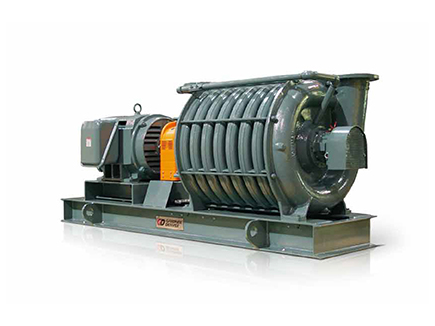



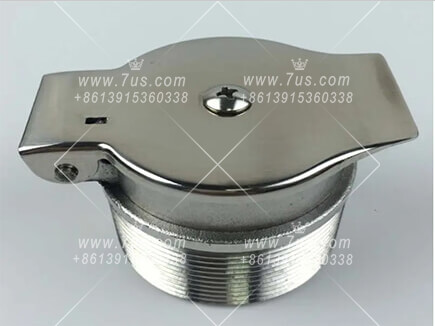
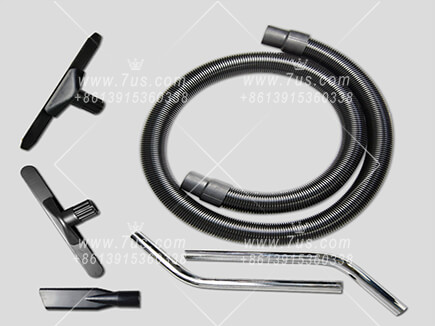
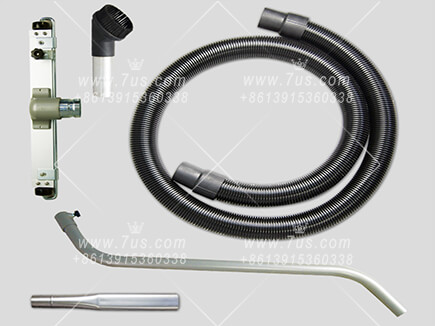
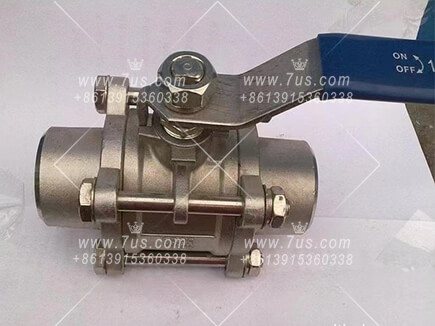
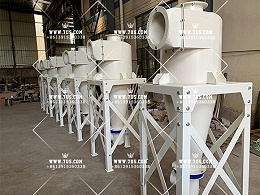 Cyclone dust collector
Cyclone dust collector 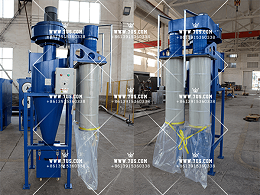 Wood dust collector
Wood dust collector